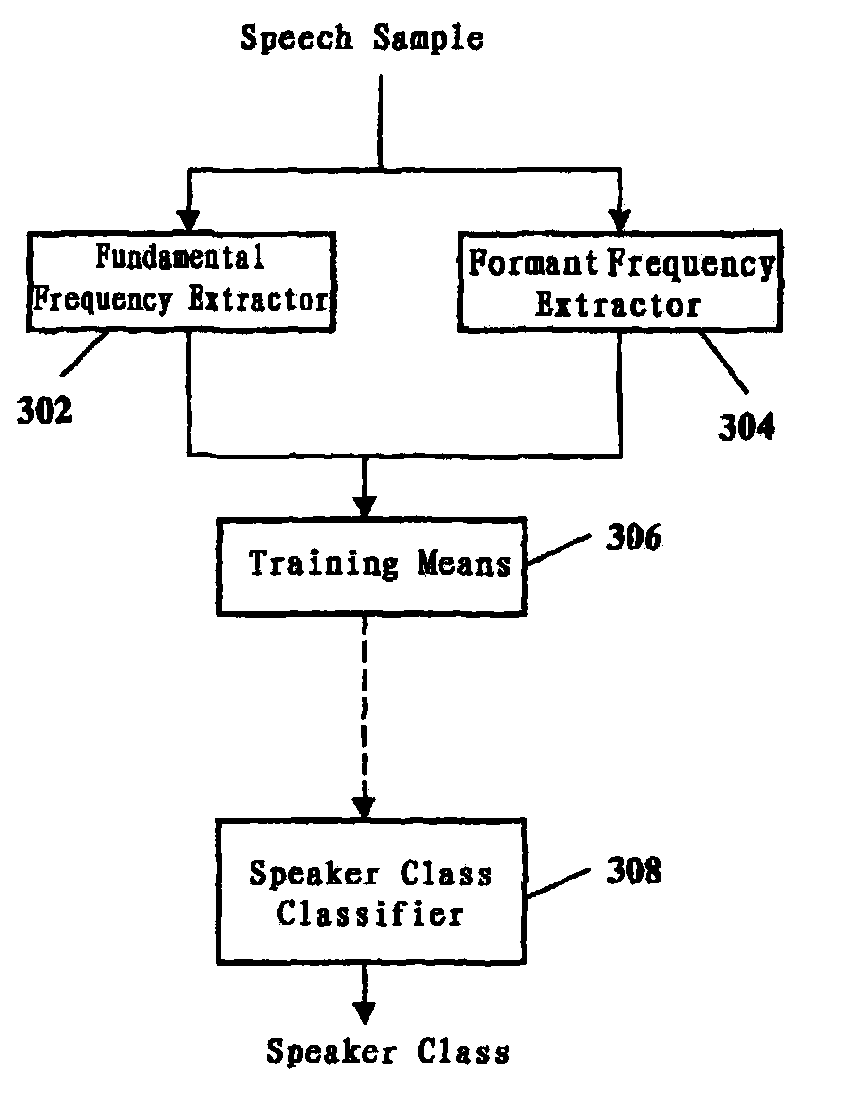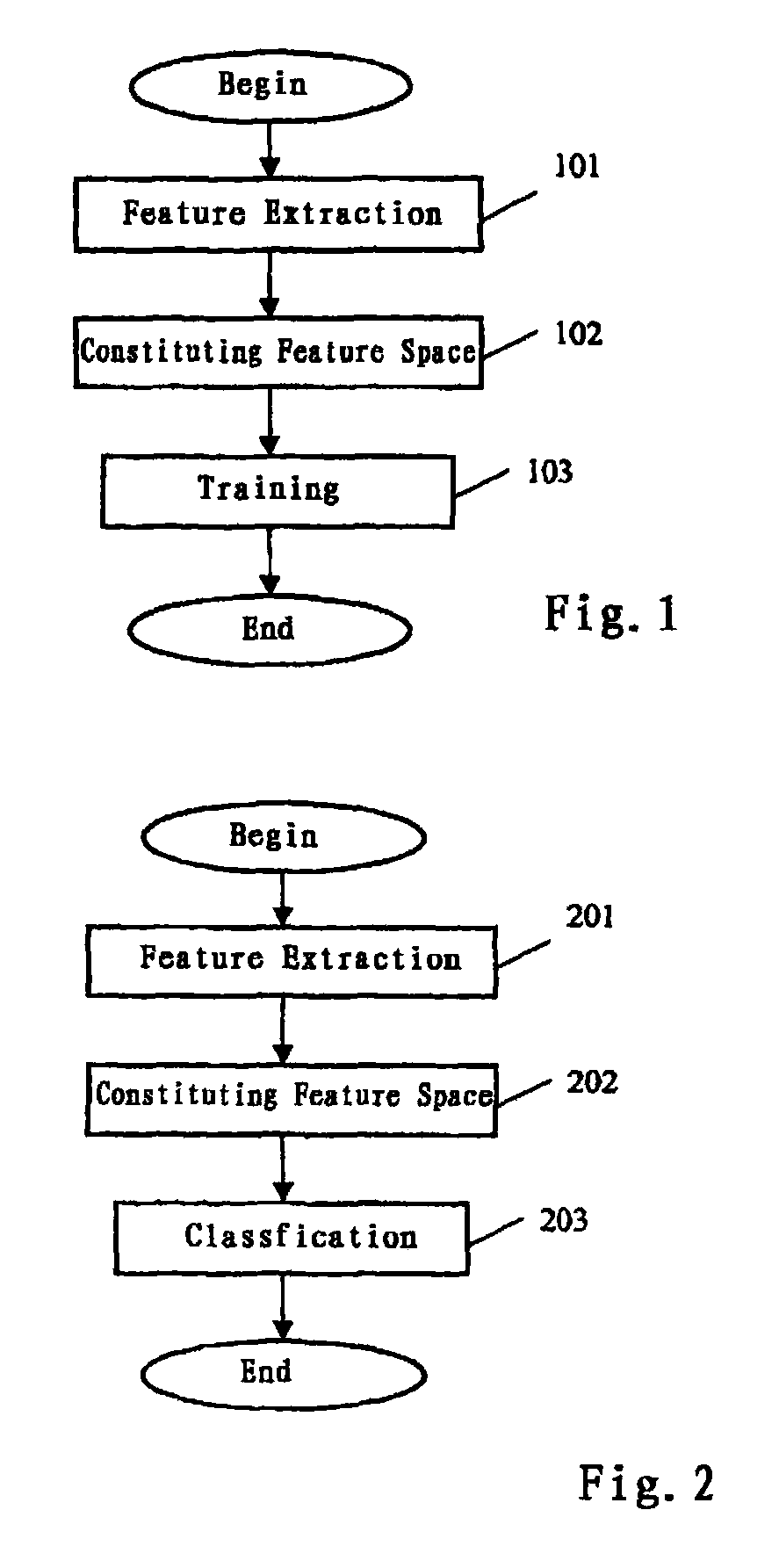Method and apparatus for processing speech data with classification models
a classification model and speech data technology, applied in the field of speech data processing methods and apparatuses, can solve the problems of large computation load, difficult performance of automatic speech recognition, and inability to accurately classify samples, so as to achieve the effect of improving the accuracy of class labeling of samples to be classified, and improving the accuracy of class labeling
- Summary
- Abstract
- Description
- Claims
- Application Information
AI Technical Summary
Benefits of technology
Problems solved by technology
Method used
Image
Examples
Embodiment Construction
[0030]From Bingxi Wang, Speech coding, Xidian University Press, China, July, 2002 we know that (as shown in Table 1), for the same consonant, the positions of the corresponding formants vary among the formant frequencies for six vowels of Mandarin as well as among speakers (such as between male speakers and female speakers) in the way that is not always consistent with their VTLs' variations. Considering that the vocal tract length will not vary when the same person utters different vowels and what will vary is just the vocal tract shape (such as degree of lip-rounding and the like), we know that the variation of the formant position and the vocal tract length is not completely consistent among different speakers and among different vowels. That is because different vocal tract shapes produce different responses to the same frequency. Therefore, different vocal tract shapes lead to different frequency warps, and different frequency warps further produce different formant positions. ...
PUM
 Login to View More
Login to View More Abstract
Description
Claims
Application Information
 Login to View More
Login to View More - R&D
- Intellectual Property
- Life Sciences
- Materials
- Tech Scout
- Unparalleled Data Quality
- Higher Quality Content
- 60% Fewer Hallucinations
Browse by: Latest US Patents, China's latest patents, Technical Efficacy Thesaurus, Application Domain, Technology Topic, Popular Technical Reports.
© 2025 PatSnap. All rights reserved.Legal|Privacy policy|Modern Slavery Act Transparency Statement|Sitemap|About US| Contact US: help@patsnap.com



